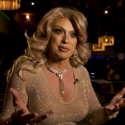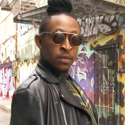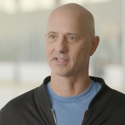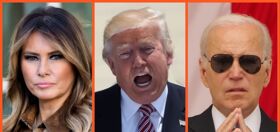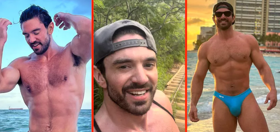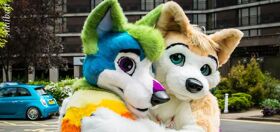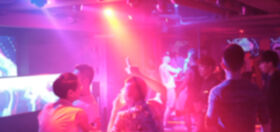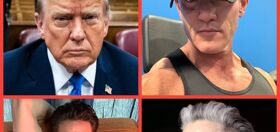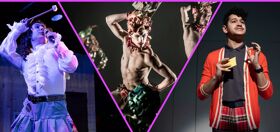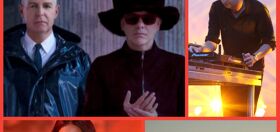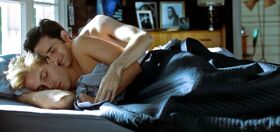From gay liberation to non-monogamy and same-sex marriage, America’s sexual revolution originated firmly in the 1960s and earlier–with much of it taking place within a few neighborhoods within the 7×7 miles of San Francisco. Over the last decades, the city has solidified its standing as the world’s freedom pioneer — showing the power of simply getting naked and unashamed.
Here are nine key moments and places that made San Francisco the envy of the world…
1. Early Gay Bars

No city has as salacious a past as San Francisco (and we mean salacious in a good way) with early watering holes like The Dash. This establishment opened in 1908 and was almost immediately shuttered after a scandal involving a city judge propositioning the cross-dressing staff. Through the 30s, Finocchio’s and Mona’s were the place for drag acts, both for kings and queens.
How about we take this to the next level?
Our newsletter is like a refreshing cocktail (or mocktail) of LGBTQ+ entertainment and pop culture, served up with a side of eye-candy.
When World War II broke out, soldiers traveling through Pacific ports stopped in San Francisco, where they availed themselves of this blossoming underground gay bar scene that often centered around drag but gradually spread to clubs catering to every slice of gay life. These places of infamy tended to be clustered around the Tenderloin and South of Market, decades before The Castro became the city’s queer epicenter.
2. Weekly (naked) dances

Something about the combination of the city’s temperate climate and liberal climes made people want to take their clothing off, even in public. The city grappled for decades with how naked is too naked, and in the 1970s San Francisco passed a law banning nudity in public parks in response to a weekly dance circle that gathered in Speedway Meadow in Golden Gate Park. Citizen complaints resulted in a crackdown. The law was updated last year to deal with random nude men who tend to roam the Castro for no apparent reason other than the spectacle of it. Even Folsom Street Fair has had to crack down on nudity and, well, public displays of affections. But the liberationist foundation remains stronger than ever.
The clothing-optional attitudes stem from the hippie movement of the 1960s, when thousands of counterculture youngsters flocked to the city to shed their parents values along with their own inhibitions. Clustering primarily around the Haight, this movement culminated in the 1967 “Summer of Love,” but the impact reverberates today.
3. The human be-in

The Summer of Love was launched by a few key events, particularly the “Human Be-In” that happened in January of 1967. The city had just banned LSD, so activists organized a massive event that drew tens of thousands of people to Golden Gate Park to protest in scantily clad outfits despite the winter chill. Mind-altering guru Timothy Leary spoke alongside Lawrence Ferlinghetti and Allen Ginsberg. The Grateful Dead opened for Jefferson Airplane. Whoa.
Everything about the hippies spoke freedom. They were liberal in their use of mind-altering substances, radical in their politics, daring in their fashion, and devoted to the greening of the environment before it was a necessity. They formed communes, wrote poetry, and threw off the clothing of a sexually repressed culture that seemed stuck in the 1950s version of mom, pop and a couple of kids.
4. Recognizing same-sex relationships

San Francisco paved the way in recognizing same-sex relationships — but it was a bumpy road. As early as 1979, employees in nearby Berkeley had proposed domestic partnerships recognition. San Francisco Supervisor Harry Britt (above) took up the idea and was able to get it passed by the SF board of supervisors. By today’s standards, the law was limited, only extending certain health benefits to the partners of city employees. It was initially vetoed by Mayor (and future U.S. Senator) Dianne Feinstein, a late convert to equality, but it eventually passed and became law. In 20o4 Mayor Gavin Newsom made worldwide news when he legalized same-sex marriage before it was overturned by California voters. Today, after the U.S. Supreme Court overturned bans on marriage equality, the city is a magnet for couples of all sorts pledging their allegiance to each other inside city hall and on the famous steps outside.
5. Early Leather Bars

Growing out of a military aesthetic from the soldiers of World War II, the leather community quickly gained a foothold (among other holds) in San Francisco. The city hosted motorcycle clubs like Warlocks and California Motor, and much of the energy centered around the bar Tool Box. This club featured an enormous mural of men in leather jackets. Featured in an issue of Life magazine, Tool Box brought awareness of the leather community to small-town gays who might never have otherwise known it existed and ended up flocking to it. The bar was a predecessor to multiple SOMA leather bars, including Powerhouse, which thrives on Folsom Street to this day.
6. The Council of the Summer of Love
![By Bryan Costales ©2009 Bryan Costales, licensed CC BY-SA 3.0 [CC BY-SA 3.0 (http://creativecommons.org/licenses/by-sa/3.0)], via Wikimedia Commons](https://www.queerty.com/content/docs-null/2016/11/KFRC_Fantasy_Fair_Dryden_Balin_Kantner-670x447.png)
In the late 60s national attention brought an influx of hippies in the city when school let out for summer, a political and cultural version of Florida beaches during spring break. The swell in temporary residents was overwhelming, and so in 1969 residents formed “The Council of the Summer of Love,” and made sure there was infrastructure, including temporary house, for the wave of visitors.
It’s important to note just how sexually repressed American society was at the time, even by the late ’60s: colleges restricted housing by gender, for example; contraception was difficult to broach in polite society. Homosexuality was considered shocking and taboo. Out of that summer of love blossomed an unofficial, informal, decentralized phenomenon known as “free love.” It was more of a philosophy than a movement, and a key tenet is the belief in love and sex without interference from peer pressure or outside institutions like marriage and the law.
This is as San Francisco as a movement can get: the city embraced personal freedom, welcoming anyone who wished to express themselves without fear of interference. Post World War II and post-the Great Depression, many Americans sought stability in the traditional family unit, but that also meant repressing any desires that existed outside of that unit. Starting in San Francisco of the 60s, young people found themselves ready to cast those rules aside.
7. Compton’s Cafeteria Riot
Of particular note during the 60s was gay lib. Thought-leaders like Ginsberg, Gore Vidal and William S. Burroughs produced poetry and prose that celebrated same love. An article in Life highlighted the city’s culture of inclusion with a headline reading “Gay San Francisco,” declaring it “the gay capital of America.”
In 1966 police harassment provoked the first documented transgender riot in the United States. It was located at Compton’s Cafeteria in the Tenderloin, and led to the city’s creation of programs that brought trans people together with police so that they could collaborate on social services and coexist. The next year, Margo Rila and Frank Esposito formed the Sexual Freedom League in the city. And when the Summer of Love reached mainstream audiences around the world, it brought people face-to-face with gay couples for what was, for many, the first time.
8. Folsom Street Fair

Just a year later, the Stonewall riots transformed liberation forever — thanks, in part, to the messages of tolerance and freedom espoused in San Francisco. During the late 1960s and early ’70s, the Castro became a cornerstone in the national LGBTQ rights movement. Organizers held Gay-Ins and organized a Gay Liberation Day that eventually became San Francisco Pride.
In the 1980s, the city’s kink community organized the first Folsom Street Fair, a celebration of bondage and leather. Initially, it was a protest against development of a neighborhood that had always been home to marginalized queer communities. The fair quickly became an international symbol of freedom, with visitors descending on the the event every September. The event continues today as a non-profit, raising money to help underserved communities and drawing nearly a half million freedom- and pleasure seekers annually.
9. Invention of safe sex

San Francisco’s embrace of sexual diversity faced numerous challenges during the 80s, especially the HIV/AIDS backlash orchestrated by the religious right via the Reagan Administration. The crisis threw free-love adherents into a a kind of panic, and the city’s response to the epidemic was to force the closure of bathhouses, where the spread of HIV was thought to be endemic. (It also deprived the community a place to educate men about safe sex practices.) Nevertheless, San Francisco quickly blazed a trail, creating the “condom code,” in which men were encouraged to have all the sex they wanted as long as they used a condom for intercourse, every time. A variety of frank, explicit education campaigns throughout the AIDS crisis helped the queer community understand the importance of protection, of testing, and of disclosing your status. Today, the city has launched a massive new project to “Get to Zero” new infections by the year 2020.


